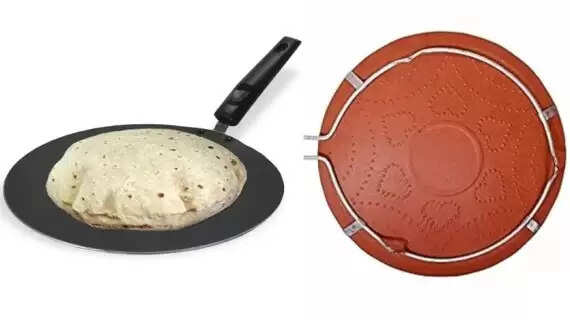
Iron Tawa: The Traditional PowerhouseIron tawas are a staple in most Indian homes. Here’s why they’re so popular:Fast Heating: Iron tawas heat up quickly and evenly, cooking chapatis faster than other materials.Iron Fortification: Cooking on iron pans can naturally increase the iron content of your roti—a great way to help fight anemia for kids and elders.Durability: With proper seasoning, iron tawas last for years and keep their surface non-stick naturally.But beware: Iron tawas need regular care to avoid rust. Using too much oil or improper washing can shorten their lifespan.Clay Tawa: Ancient Wisdom, Modern HealthClay tawas (mitti ka tawa) have made a comeback with people seeking natural wellness:Natural Taste: Clay gives rotis a unique earthy flavor and authentic softness that’s hard to match.Low Oil Cooking: Thanks to its natural non-stick surface, you’ll need less oil for perfectly cooked rotis.No Reactions: Clay doesn’t react with acidic foods and keeps toxins away.Downside? Clay tawas are fragile. They need to be dried thoroughly to prevent cracks, and sudden temperature changes can break them.Cooking Differences: What Should You Choose?FeatureIron TawaClay TawaHeating SpeedFast and uniformTakes longer, gentleTasteNeutral, iron-richEarthy, traditionalHealth BenefitsIncreases dietary ironNon-toxic, chemical freeMaintenanceNeeds seasoning/careProne to breakageOil UseNatural non-stickExtremely low oil useFor Family Health & Authentic FlavorsIf you want soft, flavorful chapatis and a dose of natural minerals, clay tawa is excellent for slow-cooked, old-style rotis. For speed, iron enhancement, and crispy chapatis, iron tawa wins. Many nutritionists recommend alternating both tawas in your kitchen for balanced health benefits.Pro Tip: Don’t scrub clay tawas harshly. Season iron tawas with oil after each wash for best results.
Around the web

